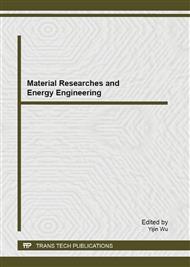p.467
p.474
p.480
p.487
p.495
p.501
p.507
p.513
p.519
Neutronic Performance of Small Long-Life Boiling Water Reactor Using Thorium as Fuel and the Addition of Protactinium as Burnable Poisons
Abstract:
Thorium has a possibility as alternative nuclear reactor fuel. Thorium has several good neutronic properties so that could provide higher capacity factor, more stable and insoluble, very resistant to weapon-material proliferation, and more cost effective. On the other hand, regarding the previous study [, neutronic performance of Thorium utilization as nuclear fuelwithout burnable poison materials additionyielded high excess reactivity. In order to handle this safety consideration without increase control mechanically, there was possible to add burnable poison (BP) materials. BP materials could absorb faster from fuel burn up because they have high cross section capture. Besides, they could left poison residue as few as they can in the end of fuel cycle. Protactinium, Pa, was a nuclide which has the same characteristic such standard BP materials. This paper describes the effect of addition of Pa-231 towards excess reactivity and operation time. The optimized design resulted in boiling water reactor with active volume 5,193.034 liter, power 182 MWt, operation time 28 years and maximum excess reactivity 0,56% dk/k. These specifications were obtained using fuel percentage composition of U-232 as much as 10 13% and Pa-231 as much as 9.36 16.01%.
Info:
Periodical:
Pages:
495-500
Citation:
Online since:
September 2013
Authors:
Keywords:
Price:
Сopyright:
© 2013 Trans Tech Publications Ltd. All Rights Reserved
Share:
Citation:


